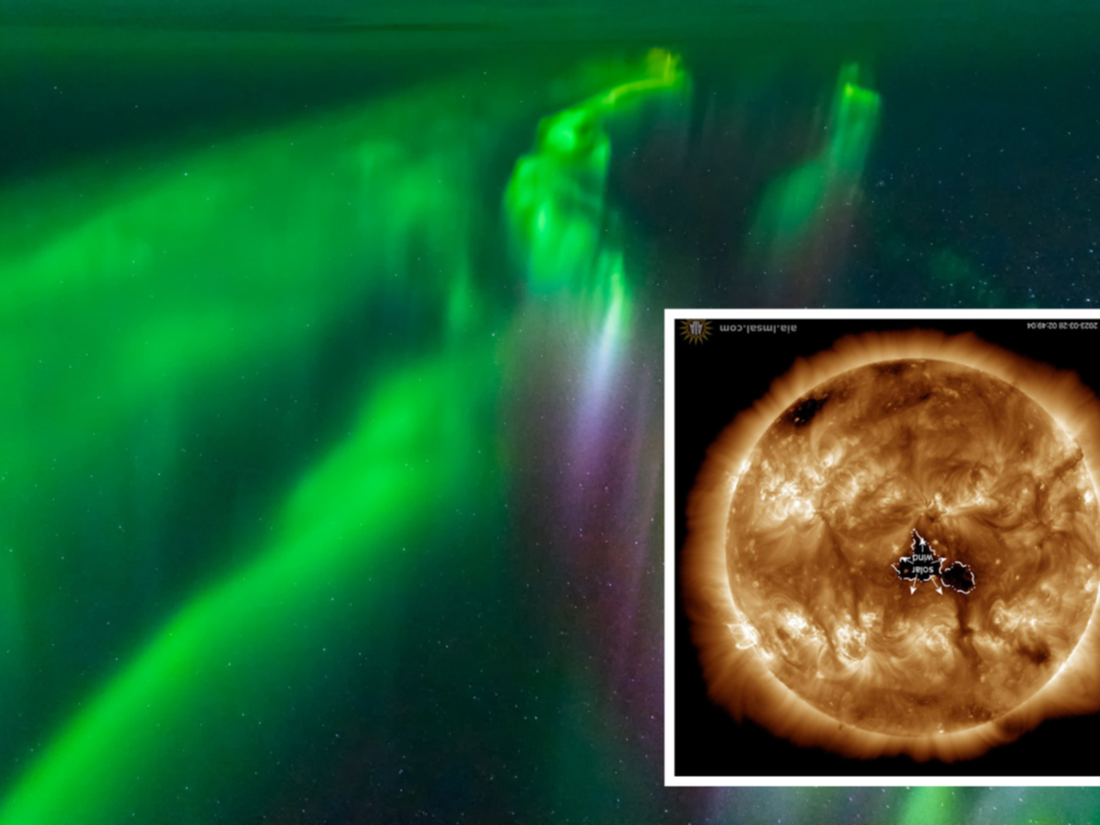Second Giant Coronal Hole on the Sun Could Disrupt Communication Channels
Second Giant Coronal Hole on the Sun Could Disrupt Communication Channels

colossal coronal hole, which is 20 times larger than Earth
coronal hole solar winds communication channels
coronal hole solar winds communication channels
A colossal coronal hole, which is 20 times larger than Earth, has been detected on the Sun, and it has unleashed a solar wind with speeds of up to 1.8 million miles per hour towards Earth. This powerful solar wind has the potential to disrupt communication channels on Friday. This is the second such hole to be detected within a week, with the first hole being spotted on March 23. It was 30 times the size of Earth and triggered beautiful auroras as far south as Arizona. Both of these holes were observed by NASA’s Solar Dynamics Observatory, which is dedicated to studying the Sun.
Dubai Astronomy Group CEO, Hasan Al Hariri, explains that coronal holes and dark spots on the Sun are related, and they are where explosions occur. These explosions take place deep within the Sun and rise up to the surface at the corona level. The impact of these events on Earth is significant as they can cause disruptions to communication channels, such as satellite communications and navigation systems.
Sun comprises coronal hole solar winds communication channels
The Sun comprises various layers of atmosphere, and the topmost layer is called the Coronal layer. While some layers are visible, others can only be seen in X-rays. This is where coronal activity becomes visible. Dubai Astronomy Group CEO, Hasan Al Hariri, explains that these activities take place in the Sun’s atmosphere where magnetic fields are entangled, and a breakup unleashes a vast amount of energy into outer space.
Telescopes such as the Solar and Heliospheric Observatory (SOHO) and the Transition Region and Coronal Explorer (TRACE) observe the Sun in detail. Additionally, the Parker Solar Probe is currently orbiting the Sun. Coronal holes such as the one observed recently release a massive amount of energy as particles, known as solar winds. These solar winds are high in speed and create magnetic fields that can cause fluctuations and vibrations, which impact Earth. The energy from coronal holes appears as heat and light, while the particles can affect communication channels and infrastructure, such as satellite communications and navigation systems.
The article states that the impact of solar activity on the Earth’s atmosphere is an ongoing area of research. While most of the particles in the solar wind are deflected by the Earth’s magnetic field, some of them get trapped and cause auroras at the poles. Additionally, the particles can sometimes deposit as ice sheets on the poles.
relationship between solar activity and the Earth’s atmosphere is complex and multifaceted
The relationship between solar activity and the Earth’s atmosphere is complex and multifaceted, and researchers are studying it from a variety of perspectives. For example, they are examining how solar activity affects the composition and dynamics of the atmosphere, how it interacts with the Earth’s magnetic field, and how it influences the climate and weather.
One area of particular interest is the effect of solar activity on the Earth’s ozone layer. The ozone layer plays a critical role in protecting the planet from harmful ultraviolet radiation from the Sun, and researchers are investigating how changes in solar activity may affect its thickness and distribution.
Another area of research is the effect of solar activity on the Earth’s climate. Some studies have suggested that changes in solar activity may be a factor in long-term climate change, although the extent of this effect is still a matter of debate.
Overall, the relationship between solar activity and the Earth’s atmosphere is a complex and dynamic one, and ongoing research is essential to understanding its various components and implications.
